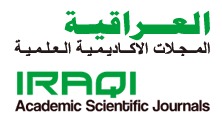The effect of training according to the principle of inertia in developing some biomechanical variables in front kick performance among karate players aged 13-16 years.
DOI:
https://doi.org/10.33170/jocope.v16i6.33-43Keywords:
inertia, karate, front kick (Mai Kiri)Abstract
The importance of this study lies in the fact that it will shed light on the combination between training and the principle of inertia when developing the performance of kicking skills in karate, as well as the practical importance of preparing special exercises using a means of increasing body mass or performing for the lower part of the body and knowing their effect in developing ability and speed from a mechanical standpoint. The aim of the research is to prepare special exercises according to the principle of inertia (increasing mass) to develop some biomechanical variables of explosiveness and speed in performing the front kick among karate players, and to identify the effect of special exercises according to the principle of inertia (increasing mass) on some biomechanical variables in performing the front kick. among karate players and identifying the differences between the pre- and post-tests of the experimental group in some biomechanical variables of front kick performance among karate players. The researcher used the experimental method in a single-group design in order to suit the nature of the research problem. The researcher chose the research community from karate players at the Sarouri Training Center affiliated with the Karate Development Organization. The research sample of (5) players was chosen randomly, and the researcher conducted a pre-test for the front kick skill (may Kerry) for the research sample, which consisted of (5) five players. The researcher prepared special training exercises according to one of the variables of inertia (increasing mass), and the training units were applied for a period of (8) weeks, at a rate of (3) training units per week, and at a rate of (24) training units. The researcher used statistical methods through the statistical package (SPSS) to extract the results through: the arithmetic mean, the skewness coefficient, the standard deviation, and the (t) value for the corresponding samples.








